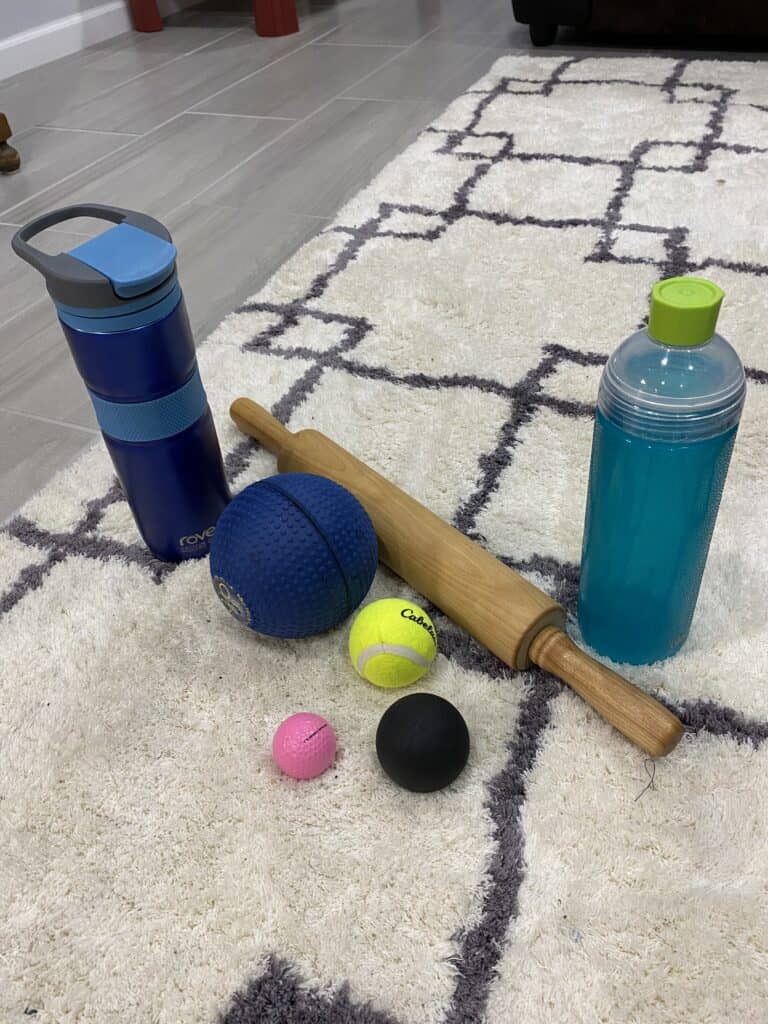Good Foam Rollers: Do They Need to be Expensive?
If you hit the gym regularly or have sore muscles and joints, you must have heard of foam rollers.
You may have seen those lucky people happily rolling out on them and recovering faster.
Have you hesitated to buy one for your home workouts because you thought they were ridiculously expensive?
Well, friend, you’re not alone.
After some digging, I’ve discovered that the popularity and versatility of foam rollers justify their steep price tag.
But fear not! The truth is, you can find a decent foam roller for less than $50, and some DIY enthusiasts have even found ways to make their own.
In this blog post, we’ll dive into why they’re such a valuable fitness tool and what makes them worth the investment. As well as some great alternatives to a foam roller.
So, grab your wallet (or a water bottle if you’re budget-conscious) and join me as we explore the hype behind these fancy muscle massagers.
This post contains affiliate links. As an Amazon Associate, I earn from qualifying purchases. This means I may earn a commission, at no extra cost to you, should you choose to make a purchase using my link.
5 Benefits of Foam Rollers
1. Increases Flexibility and Mobility
One of the primary benefits of foam rolling is its ability to increase flexibility and mobility.
Foam rollers work on the fascia, the connective tissue that surrounds your muscles, and can help release tension and improve your range of motion.
By using a foam roller before and after a workout, you can ensure that your muscles are loose and ready to go, helping you avoid injury and improving your overall performance.
2. Reduces Muscle Soreness and Tightness
Have you ever woken up after a workout feeling incredibly sore and stiff?
Foam rolling can help with that, too!
Using foam rollers after a workout helps to reduce muscle soreness and tightness, making it an excellent tool for recovery.
By massaging your muscles using a foam roller, you can increase blood flow to the area, promoting healing and reducing inflammation.
3. Enhances Performance
Foam rolling can also help to enhance your performance during workouts.
By using a foam roller to warm up before a workout, you can increase blood flow to the muscles, promoting better performance.
Plus, using a foam roller after a workout can help to prevent muscle imbalances, meaning you’ll be able to perform better the next time you hit the gym.
4. Saves You Money on Massages
Who doesn’t love a good massage?
But let’s face it, they can be expensive.
Using foam rollers can provide similar benefits to a massage, but without the hefty price tag.
By investing in a foam roller, you can give yourself a massage at home, whenever you want, saving you money and providing you with the benefits you need.
5. Provides Overall Wellness Benefits
Using foam rollers isn’t just about improving your fitness routine. It can also provide overall wellness benefits.
By reducing inflammation and promoting healing, foam rolling can help to relieve stress and anxiety, helping to promote overall mental health.
Do Cheap Foam Rollers Really Work?
The cost of a foam roller does not need to be crazy expensive. It is not necessarily “the more you pay the better the foam roller”.
I have used many inexpensive foam rollers that work just as well as a more expensive one.
So, are foam rollers expensive?
A good medium or high-density foam roller can be found for under $20.00.
As you move up to a Grid foam roller the price may increase slightly to the $30.00 – $60.00 range.
I have even seen them much higher in price, but this doesn’t necessarily make them better.
The vibrating or temperature-controlled foam rollers can be a little pricy.
However, if this is what you are looking for and feel that it would be more helpful, than it may be worth the price tag.
Some people have even been able to make a DIY foam roller for under $5.00.
These home-made projects have been found to be just as amazing as the store-bought ones.
As you can see the price of a foam roller can be very reasonable. Not to mention the benefits are well worth the investment.
What Can I Use Instead of a Foam Roller?
There are several other options to use instead of a foam roller.
You may have items laying around your home that can work just as well.
A few options are:
- A rolling pin
- A water bottle
- Tennis ball, lacrosse ball or golf ball – A tennis ball or lacrosse ball can also be very powerful when targeting the trigger points. A golf ball can also be helpful in some areas but be careful.
The smaller the ball the more pressure you may be applying to the specific area. Remember a self-myofascial release may cause discomfort but should not be overly painful.
- Yoga ball – If you are trying to target a specific trigger point in a larger area, you may want to consider using a yoga ball. This can get deeper into larger muscles such as the buttocks, or hamstrings.
- A PVC pipe is also an option, but I would not recommend this for a beginner as it may be to firm. You may want to wrap the PVC pipe in a padding to give it a little more give.

When using a yoga ball, tennis ball or golf ball you can either lay on the floor or lean up against a wall and move back and forth.
If using a small ball against the wall you may want to consider putting it in a sock that you can hold it in place. It can be frustrating if it keeps falling.
In Conclusion
Foam rollers are a simple yet effective tool for enhancing your workout routine and promoting overall wellness.
If you work out, sit at a desk for long periods of time, have a physical job demand or suffer from chronic pain, a foam roller may be just what you need.
By using a foam roller, you can improve flexibility, reduce muscle soreness, and enhance your performance, all while saving you money on massages.
Foam rollers do not have to be expensive to work. You do not need to take out a loan to get a good foam roller that meets your needs.
So, next time you hit the gym, make sure you bring along your trusty foam roller – your body will thank you for it!
